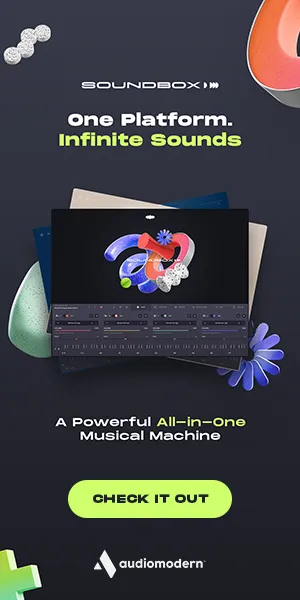4. December 2016 | Reviews | Noizefield
Spitfire Symphonic Strings – Review

Spitfire Audio has released Spitfire Symphonic Strings, a 60 string player sized string library with the aim “to create the definitive compendium of Symphonic strings, recorded with a no-holds-barred approach.”
The core features:
- 175 articulations, including 59 shorts, 94 longs, & 45 legatos
- 89365 Samples, 147.6 GB Uncompressed .WAV
- 60 Top London string players
- Recorded in situ (ie: in the positions they occupy in a scoring session)
- Recorded using priceless valve and ribbon mics
- Neve Montserrat Pre-amps into a Neve 88R desk
- Recorded digitally at 96k via 2″ Studer tape
- Deep sampled with multiple dynamic layers and round robins
- Diverse and detailed with essential, additional and some totally unique articulations
- Legatos designed by Andrew Blaney
- Individual sections and ensembles
- 3 essential, diverse and most favoured mic positions: C(lose), T(ree), A(mbient)
- Kontakt Player included
- NKS-ready
- New intuitive GUI with inline help system
- As used by A-list composers and producers around the globe!
The Setup
As mentioned in the Spitfire Chamber Strings – Review, Spitfire Audio provides a nice and clever tool – the Spitfire Audio Library Manager – for downloading and installing all the samples and the complete Spitfire Symphonic Strings library.
Once you are connected and logged in, the Spitfire Audio Library Manager does the rest for you and downloads everything, it even checks if there are software updates and new sample content available.
What’s inside Spitfire Symphonic Strings
Spitfire Symphonic Strings is the third release in the “Spitfire” range which replaces the BML (The British Modular Library) and covers a 60 player large string section with 16 1st Violins, 14 2nd Violins, 12 Violas, 10 Cellos and 8 Basses. As with most of the Spitfire Audio libraries all instruments where recorded at Air Studios in London. Therefore they fit perfect to all the other libraries and no additional room or reverb is mandatory.
A demonstration and review of every single articulation would go far beyond the scope of this review, but for a full list of all articulations and features please check the table below or visit the Spitfire Audio website here: Spitfire Audio | Spitfire Symphonic Strings
The ultimate string compendium
With over 170 different articulations and almost 9000 samples this library is a massive beast and the largest string collection from Spitfire so far. Be sure to reserve more then 200GB disk space on your hard drive during the installation. After the set-up is complete the library will take about 100GB of space and its best installed on a fast SSD drive to avoid long loading time.
Like with Spitfire Chamber Strings all the patches and articulations are sorted in the same way. In the root folder you will find the “Master” patches: a – Violins 1, b – Violins 2, c – Violas, d – Celli, e – Basses and f – Ensembles. All the individual, special and more advanced patches are located in the _Advanced_ folder. In this folder there are 5 sub folders: “Extended techniques”, “Individual articulations”, “Legato techniques”, “Other patches” and “Performance legato”.
Extended techniques – Core & Decorative
The Extended techniques folder comes with 2 different patches, called Core techniques and Decorative techniques, for each instrument section. This results in 12 patches where all the different articulations can be switched with key switches. For example in the patch a – Violins 1 – Decorative techniques there is not just one tremolo articulation but 5 including three tempo synced (150BPM and 180BPM).
Individual articulations
Within the Individual articulations folder there are again 6 folders for each section including the ensembles. In each of these folders you can find every single articulation as a patch. Depending on the preference some composers like to use these instead of using key switches. Generally I also prefer to have an individual patch for each articulation, but there are so many of them that it would just take ages to map them properly in a template and just for the celli alone there are 38 patches. In the end we would end up with hundreds of tracks.
Legato techniques
The “Legato techniques” contains 4 legato patches: “a – Violins 1 – Legato Sul G”, “b – Violins 2 – Legato Sul G”, “c – Violas – Legato Sul C” and “d – Celli – Legato Sul C”.
Other patches
As usual the Other patches folder consist of several additional patches like Economic patches, light resources or time machine patches.
Performance legato
Very easy to use are the performance legato patches. These patches do not cover as many articulations but are composer friendly as they have some clever programming feature. If you play very soft and silent you get portamento and as you play more hard you will get legato fingered or bowed. A faster playing leads to fast legato and very fast playing results in runs. The folder contains all the sections from Violins 1 to Basses.
Mic perspectives
Every articulation and instrument section was recorded with the 3 different microphone positions close (C), decca tree (D) and ambient (A) at Air Studios in London. In future Spitfire Audio will release an additional library with alternative mic perspectives.
The Sound
The Spitfire Symphonic Strings library sounds absolutely fabulous and perfectly adopts to the fantastic Spitfire Symphonic Brass lib. An instant Cinematic sound at your fingertips.
This library covers everything you need in order to create that typical cinematic string sound we all know from countless block buster movies and are very inspiring to create extremely well sounding string arrangements. With the Air Studio captured room sound, all samples get that extra “airy” feeling and are wrapped with the typical lush, epic cinematic sound. There is no need for an additional room or reverb plug-in in my opinion – at least if you don’t have to blend this library with another more dry or wetter library.
Most of the patches can be played with lots of dynamic from piano (soft) to forte (loud) and the blending between these dynamics sounds very natural. On several patches you can even “feel” the individual instruments.
The detail, the lush and very dynamic sound of this library is impressive. Playing with all the different instruments and articulations is very inspirational and a pleasure. If you want to create modern film music Spitfire Symphonic Strings is a must have in you arsenal.
Watch the Symphonic Strings Walkthrough
Spitfire Symphonic Strings can be purchased and digitally downloaded from Spitfire Audio for £699.00 GBP / $789.00 USD / €799.00 EUR (inc. VAT) from here:
Spitfire Audio | Spitfire Symphonic Strings/
Review summary
-
Overall Sound Quality
-
Features
-
Stability
-
Workflow
-
Pricing
Summary
An instant Cinematic sound at your fingertips. This library covers everything you need in order to create that typical cinematic string sound we all know from countless block buster movies and are very inspiring to create extremely well sounding string arrangements.
HIT OR SHIT Indicator
Average Indication by Readers
What do you think?
Hit or Shit? Please rate from 1 (💩) to 10 (🚀)
Leave a Reply
You must be logged in to post a comment.




